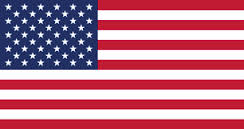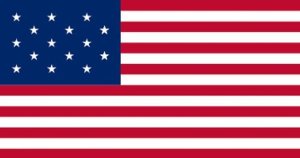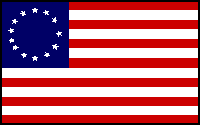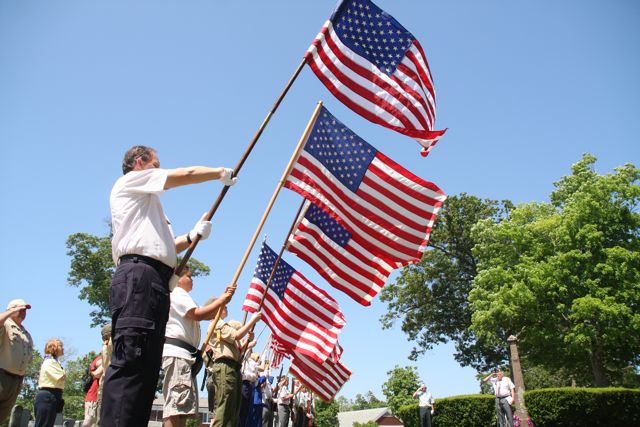Today is Flag Day, commemorating the 238th birthday of the American flag and if you don’t already do so, today’s the day to fly that red-white-and-blue symbol of our nation.
What’s this holiday about and why is it observed?
Historically flags originate as military banners, to identify combatants. But they’ve been flown as national symbols, at times other than during warfare, for hundreds of years.

The evolution of the American flag
The flag we salute today, a banner consisting of 13 alternating red and white stripes with 50 stars on a blue union, has been the official flag of the Unites States since July 4, 1960. The 13 stripes represent the 13 original colonies: Delaware, Pennsylvania, New Jersey, Georgia, Connecticut, Massachusetts, Maryland, South Carolina, New Hampshire, Virginia, New York, North Carolina, Rhode Island. The stars represent the current number of states in the Union.
Today’s flag is the 25th iteration of the Star Spangled Banner since an 1818 law mandated the number of stripes remain at 13 while the number of stars be adjusted to reflect the current number of states. Before that, stripes were also added to the banner to reflect the admission of new states to the Union.

From 1795 to 1818 the flag had 15 stripes — the additional two representing the new states of Vermont and Kentucky. Under the 1818 law, the number of stripes was rolled back to 13, one for each original state.
The new law provided that a new star be added to the flag on the July 4 following the admission of a new state into the union. There have been 25 new iterations of the U.S. flag to reflect the growth of the nation with the admission of new states to the union. The current flag, with a union of 50 stars, has flown since July 4, 1960. The arrangement of the stars on the field of blue was dictated by an executive order signed by President Dwight Eisenhower.

The original design of the first official flag was adopted by the Second Continental Congress as the official flag of the United States on June 14, 1777.
Before that, several other flags flew above revolutionary forces on American battlefields as the new nation fought for its independence. These included the Liberty Tree flag flown by New Englanders, the Gadsden (rattlesnake) flag flown by southerners and the Grand Union flag, which had a British Union Jack in the canton and 13 alternating red and white stripes.

Flag Day and Flag Week
The observance of National Flag Day on June 14 of each year was established by federal law in 1949, during the administration of President Harry S Truman. But the holiday dates back to 1885, when a grade school teacher in Wisconsin organized the first known Flag Day ceremony at the Stony Hill School in Waubeka.
By act of Congress, June 14 also marks the beginning of National Flag Week.

Presidential proclamation – 2015
For more than 200 years, the American flag has been a proud symbol of the people of our Nation and the values for which we stand. In hues of red, white, and blue, it reflects centuries of struggle and sacrifice — a constant reminder of our journey from 13 colonies to a Nation united in freedom and liberty, and of the patriots and pioneers who fought for these ideals at home and abroad. On Flag Day and during National Flag Week, we pay tribute to this banner of hope and opportunity, and we celebrate the story of progress it represents.
 With broad stripes and bright stars, our flag has connected Americans across our country, around the globe, and throughout the chapters of our history. In a new world, it stood as a beacon of promise and possibility; in the dawn’s early light, it offered a glimmer of hope as the fate of our young Nation was decided; and after a civil war that divided our Union, the Star Spangled Banner once again united our people. As courageous women and men marched and protested to broaden our democracy’s reach and secure their civil rights, they carried the American flag, understanding the enormous potential it embodied — even as the Nation it represented denied them their fundamental rights. Today, it is because of an unbroken chain of heroes, who have served in our Armed Forces and worn the flag they defend, that Old Glory still waves over the land of the free and the home of the brave.
With broad stripes and bright stars, our flag has connected Americans across our country, around the globe, and throughout the chapters of our history. In a new world, it stood as a beacon of promise and possibility; in the dawn’s early light, it offered a glimmer of hope as the fate of our young Nation was decided; and after a civil war that divided our Union, the Star Spangled Banner once again united our people. As courageous women and men marched and protested to broaden our democracy’s reach and secure their civil rights, they carried the American flag, understanding the enormous potential it embodied — even as the Nation it represented denied them their fundamental rights. Today, it is because of an unbroken chain of heroes, who have served in our Armed Forces and worn the flag they defend, that Old Glory still waves over the land of the free and the home of the brave.
From storefronts and homes, atop monuments, and over the institutions that sustain our Nation at home and abroad, the American flag stands watch as we strive to perfect our Union. As we place our hand over our heart or as we salute this symbol of the country we love, let us pause to reflect on the legacy of our Nation and embrace the common threads that bind us together as Americans.
To commemorate the adoption of our flag, the Congress, by joint resolution approved August 3, 1949, as amended (63 Stat. 492), designated June 14 of each year as “Flag Day” and requested that the President issue an annual proclamation calling for its observance and for the display of the flag of the United States on all Federal Government buildings. The Congress also requested, by joint resolution approved June 9, 1966, as amended (80 Stat. 194), that the President annually issue a proclamation designating the week in which June 14 occurs as “National Flag Week” and call upon citizens of the United States to display the flag during that week.
NOW, THEREFORE, I, BARACK OBAMA, President of the United States of America, do hereby proclaim June 14, 2015, as Flag Day and the week beginning June 14, 2015, as National Flag Week. I direct the appropriate officials to display the flag on all Federal Government buildings during that week, and I urge all Americans to observe Flag Day and National Flag Week by displaying the flag. I also call upon the people of the United States to observe with pride and all due ceremony those days from Flag Day through Independence Day, also set aside by the Congress (89 Stat. 211), as a time to honor America, to celebrate our heritage in public gatherings and activities, and to publicly recite the Pledge of Allegiance to the Flag of the United States of America.
IN WITNESS WHEREOF, I have hereunto set my hand this twelfth day of June, in the year of our Lord two thousand fifteen, and of the Independence of the United States of America the two hundred and thirty-ninth.
Fly the flag with care and respect
According to the U.S. Code, the flag should be displayed only from sunrise to sunset, and should only be displayed at night if “properly illuminated during the hours of darkness.”
The code also says the flag should not be displayed on days when the weather is inclement, “except when an all-weather flag is displayed.”
For information on the etiquette of displaying and handling the U.S. flag, click here.
The survival of local journalism depends on your support.
We are a small family-owned operation. You rely on us to stay informed, and we depend on you to make our work possible. Just a few dollars can help us continue to bring this important service to our community.
Support RiverheadLOCAL today.
































